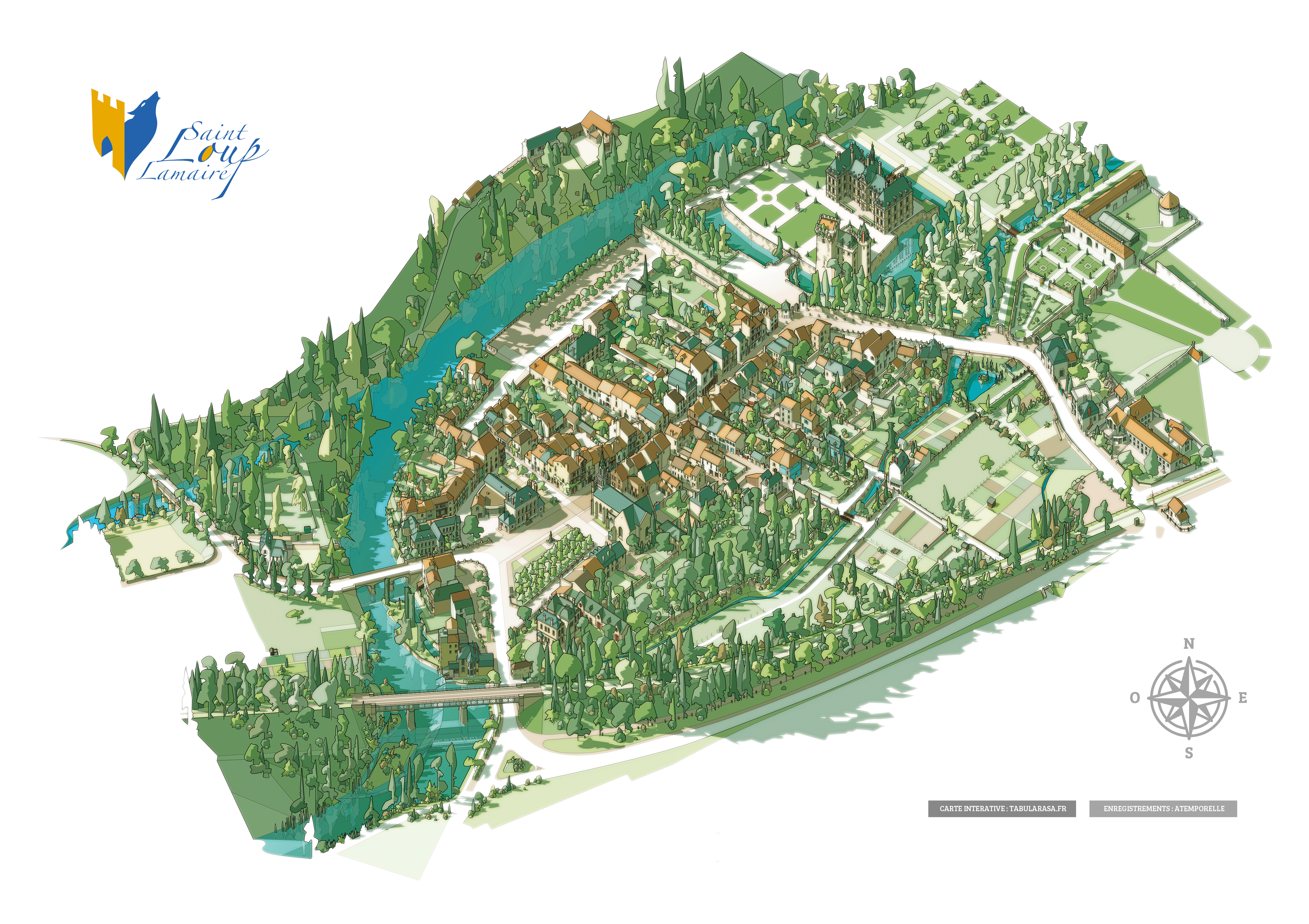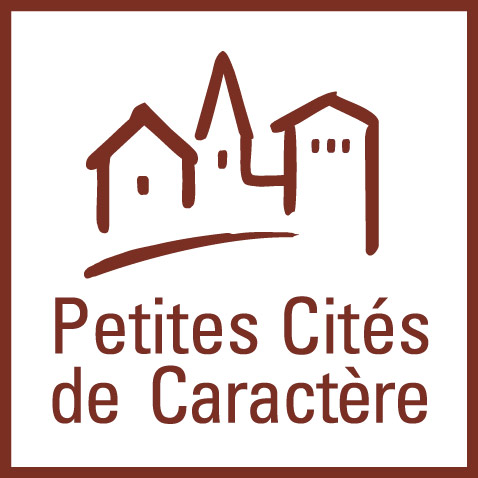
Belle façade renaissance
Ik you then return by the rue des Trois Rois, you will notice on your right, as you enter the rue Sainte Catherine, a small house with an attractive facade.
La grande place
Here are some informations about the big place of Saint-Loup of Thouet in this audio commentary
Le Thouet
here are other informations about the river "le thouet" that you can find in Saint-Loup Lamairé
Ancienne minoterie Mirebeau
Here you can find more informations about traditional minoterie Mirebeau in this audio commentary
Place des poulies
You continue by taking the rue Arouet to arrive in the place des Poulies wich the name of wich dates from the 15th century when the cloth makers used pulleys to hang their fabric. There was a games court.
Auberge Sainte Catherine
At the n°7 a beautiful renaissance style property, which was at that time, the home of the Suyres, an old established family of St Loup. Next is the auberge Sainte Catherine behind which was a tannery close to the river.
La rue du Vieux Pont
The rue Sainte Catherine leads to rue du Vieux Pont. The bridge, now demolished, was the access to Saint Loup. The village was protected on one side by the river Thouet, and on the other by fortifications ok which a few traces still remain.
Saint Théophane Vénard
Here you can find more informations about Saint Théophane Vénard in this audio commentary
L'orgue Aubertin
The Aubertin organ, of exceptional quality, was designed mainly for baroque music. Several concerts are given in the church each year. The 18th century paintings of the road to the cross have been recently restored.
Retable dans la chapelle
Returning to the church ,which you can visit. It was built at the beginning of the 16th century but added to and changed up to the 19th. In the chapel of the Virgin Mary is a carved reredos (1659-1679). You will see in the middle, above the altar, a Pieta (Mary holding the body of Christ) in the style of Michelangelo.
L'église Notre Dame de l'Assomption
Here are some informations about the church "Notre Dame de l'Assomption" in this audio commentary
Sénéchaussée
The beginning of 16th. Cetury saw an important growth in the tanning and cloth industries, which were run by the wealthy middle classes. This prosperity gave rise to a street of fine houses between the church an the château. The facades of timber and brick (which differ from house to house) and the slighty projecting upper storeys retain their charm. Inside, the imposing chimneypieces and spiral stone staircases can still be seen. At the entrance to the village ont the corner of Grand'rue Théophane Vénard and the rue des Trois Rois, opposite the church, is the 15th. Century house of the Senechal. It was the headquarters of the judge or steward of the local nobleman. On the ground floor of this half-timbered building is a fine chimneypiece carrying the coat-of-arms of the Derce family (who built the Keep) who were noblemen of Saint Loup. It is now a private house and classed as an historic monument.
Maison de Saint Théophane Vénard
the birthplace of SaintThéophane Vénard who was beheaded as a mayrtyre in Tonkin in 1861. This building, which you can visit, has changed little and is characteristic of 15th. Century housses.
Garniture animalière
You will find traces of animal embellishments at first storey level.
Maison d'hébergement du château
The guesthouse for the château of which the left hand section was a hostel under the sign of Saint Jacques.
Le Relais du Chapeau Rouge
The Relais du Chapeau Rouge probably a coaching inn, is today an hotel restaurant where you can see a very fine staircase. An impressive chimneypiece adornes a very large room on the first floor.
La grande tannerie
The house of Arouet (ancestors of Voltair) is today a charming gite. It has a fine staircase and in the garden behind the house are the remains of the old tanning vats and the hanging shed where the skins were dried. The house was known as the « Grande Tannerie ».
Le château
At the end of the Grand'rue is the entrance to the chateau. In the first courtyard is the Keep. It was built by the Derce family in the 14th and 15th century. John le Bon is supposed to have slept there when he was prisoner of the Black Prince after the Battle of Poitiers in 1356. The 17th century chateau was built by the Gouffier family in the style of Louis XIII. This renaissance style preceded that of the « Grand Siecle » and it inspired Charles Perrault to write the fairy tale of Puiss in Boots. The Château and it's garden can be visited (informations as the castel)
Belles demeures
Are two houses with their original facades.
Maison de tanneurs
A fine tanners house of the 15th century where you can stay for bed and breakfast.
Mentions légales
Projet porté par :
Ce projet de plan cavalier est porté par : La commune de Saint-Loup-Lamairé, le label Petites Cités de Caractère, l'Agence de Développement Touristique et le Département des Deux-Sèvres.
Les voix ont été produites et enregistrées par ATEMPORELLE
Le plan cavalier brut a été réalisé par Damien Cabiron
Conception et développement de la carte interactive par Tabula Rasa
Legal Mentions
Project carried by:
This bird's-eye view map project is carried by: The commune of Saint-Loup-Lamairé, the Petites Cités de Caractère label, the Tourist Development Agency, and the Deux-Sèvres Department.
The voices were produced and recorded by ATEMPORELLE
The raw bird's-eye view map was created by Damien Cabiron
Design and development of the interactive map by Tabula Rasa





